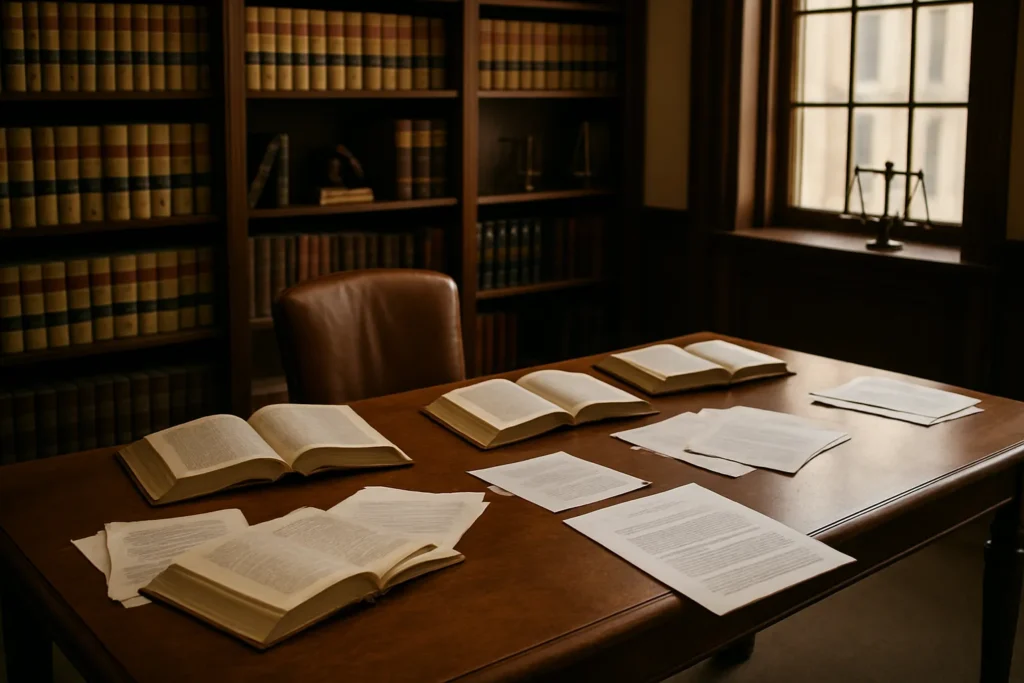Standing in Solidarity: Sotomayor’s Challenge to the Legal Profession
Justice Sonia Sotomayor stood beneath the dramatic arches of the National Museum of African American History & Culture in Washington, D.C., her message unmistakably urgent. In front of hundreds of legal professionals gathered at the American Bar Association’s Tort, Trial, and Insurance Practice Section, Sotomayor delivered a call to action: lawyers must “stand up” and “fight this fight,” defending the rule of law while the country’s legal system endures an unprecedented wave of attacks.
Her speech came not during a time of normalcy, but of turmoil: high-profile clashes between the Trump administration and elite law firms, political targeting of the American Bar Association (ABA), and new restrictions stripping attorneys from these firms of clearances and access to federal spaces. In the midst of these upheavals, Sotomayor’s voice resonated as both a warning and a beacon. She called her appearance an “act of solidarity” not only with the embattled ABA, but with the very foundations of American justice.
Sotomayor’s challenge was personal as much as political. Reflecting on her early days as a summer associate at the law firm Paul Weiss—one of many elite firms now in the administration’s crosshairs—she acknowledged the complicated reality: powerful firms walked a tightrope between defending principle and protecting business interests amid direct threats from the White House. This is a legal landscape where, as Sotomayor noted, abandoning one’s values is simply not an option.
A Judiciary Under Siege: Political Retaliation Meets Professional Duty
Across the nation, the Trump administration’s combative stance against the legal establishment has led to more than bruised egos—it has triggered worrying ramifications for legal independence. ABA events found themselves shunned, attorneys barred from key federal facilities, and diversity initiatives threatened with defunding. According to investigative reports by the Associated Press, federal grant terminations became a chilling new norm for organizations daring to promote diversity or civil rights in legal education, underscoring a growing animosity towards pluralism at the highest levels of power.
You have to ask: what happens to the scaffolding of democracy when its defenders are systematically sidelined? Harvard Law professor Laurence Tribe, an outspoken advocate for the independence of the judiciary, has warned, “The undermining of bar associations is an erosion of checks and balances. If lawyers and judges feel they’re operating under threat, the system itself begins to buckle.”
Even within the Supreme Court’s own chambers, alarm bells have sounded. Chief Justice John Roberts defended judicial independence at a separate appearance in Buffalo, reminding the public that “independent courts are necessary to check the excesses of Congress or the executive.” Shortly thereafter, Justice Ketanji Brown Jackson described attacks on judges—whether by politicians or private citizens—as attacks on democracy itself. These pointed statements, arriving in chorus but rarely naming names, betray a judiciary deeply aware of its embattled position.
“If lawyers and judges feel they’re operating under threat, the system itself begins to buckle.” — Harvard Law professor Laurence Tribe
The American Bar Association, historically viewed as the nation’s anchor for ethical standards and diversity in the legal profession, is now both a legal adversary and political lightning rod. Its lawsuit against the Trump administration over grant revocations and diversity program threats makes plain the stakes: the survival of a pluralistic, merit-based legal culture, open to all voices and resilient to political interference.
The Stakes: Defending a Fragile Framework
Why do these battles matter far beyond the marble halls of the courts? Because when lawyers are deterred from representing the marginalized or challenging the politically powerful, the very concept of equal justice withers. Sotomayor reminded her audience—many who have devoted their careers to defending the vulnerable, often for little public recognition—that the rule of law depends on their passion and courage. When the legal system becomes an arena for political retribution, social progress stands to lose ground most quickly.
Historical echoes abound for anyone willing to listen. During the post-Watergate era, public trust in American institutions was at a nadir, yet strong judicial figures and the legal community helped shepherd the nation back toward accountability and reform. The current juncture, as many legal historians have observed, carries unsettling parallels, but also hope: the precedent of collective advocacy in the face of intimidation. “You do not get to check out when things are toughest,” former ABA president Paulette Brown has said. “Because then you are giving away the gains you struggled so hard to win.”
The threats aren’t merely abstract or rhetorical. Recent years have brought an uptick in threats and violence against federal judges, a trend the U.S. Marshals Service has tracked with increasing alarm. As Justice Sotomayor and her colleagues rally to defend judicial independence, these dangers impose very real costs—on judges, on attorneys, and, ultimately, on ordinary Americans seeking justice.
Yet optimism persists. The repeated affirmations of solidarity—from a Supreme Court justice standing alongside the ABA to ordinary advocates persevering for immigrant families, civil rights claimants, and the unjustly accused—rekindle the belief that collective resilience can turn back the tide.
This era calls for more than procedural expertise or quiet diligence—it calls for courageous advocacy, deep empathy, and the refusal to cede ground to intimidation. The stakes, as Justice Sotomayor made clear, are nothing less than the continued vitality of the American experiment in justice for all.

